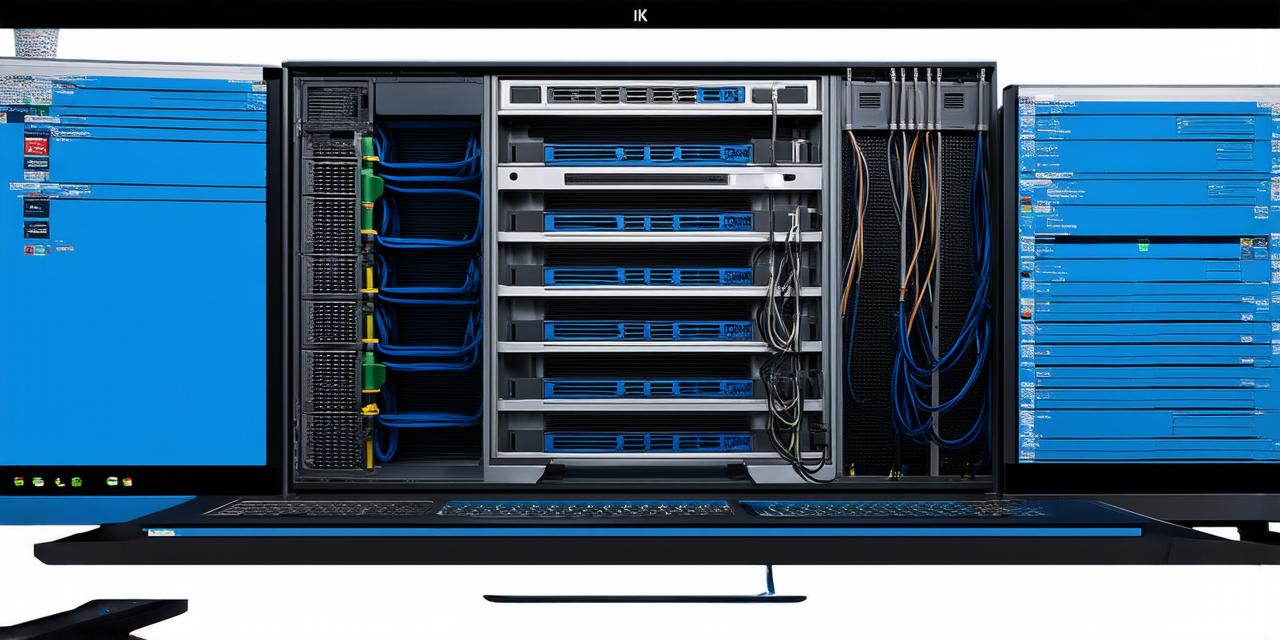Self-hosting is an exciting prospect for hosting developers looking to take control of their web infrastructure. Whether you’re a small business owner, a content creator, or just someone who wants more freedom and flexibility with their website, self-hosting can be the perfect solution. In this guide, we will explore everything you need to know about self-hosting, from the basics to the advanced techniques.
Understanding Self-Hosting
Self-hosting means that you are responsible for managing and maintaining your own web server, as opposed to relying on a third-party hosting provider. This gives you complete control over your website’s infrastructure, including software installation, configuration, and security. With self-hosting, you can customize your server to fit your specific needs, without being limited by the features and resources provided by a hosting provider.
The Benefits of Self-Hosting
There are several benefits to self-hosting that make it an attractive option for hosting developers. These include:
- More control over your website’s infrastructure
- Customization options for software, configuration, and security
- Lower costs compared to using a third-party hosting provider
- Improved performance and speed
- Reduced downtime due to the ability to manage your own server
- The ability to host multiple websites on a single server
The Risks of Self-Hosting
While self-hosting offers several benefits, it also comes with its fair share of risks. These include:
- Technical expertise and knowledge required to manage the server
- Responsibility for server maintenance and updates
- Security risks if not properly secured
- The potential for downtime due to technical issues or hardware failures
How to Get Started with Self-Hosting
Now that you understand the basics of self-hosting and its benefits, let’s dive into how you can get started. Here are some steps to follow:
- Choose a web server software: The first step is to choose a web server software that you will use to manage your server. Some popular options include Apache, Nginx, and Lighttpd. Each of these has its own strengths and weaknesses, so it’s important to do your research and choose the one that best fits your needs.
- Choose a hosting provider: While self-hosting means managing your own server, you still need to have access to a physical server. There are several hosting providers that offer dedicated servers for self-hosting, such as DigitalOcean, Linode, and Vultr.
- Install and configure the web server software: Once you have chosen your server provider, you will need to install and configure your web server software on your server. This typically involves following a series of steps provided by your server provider, as well as configuring the software to fit your specific needs.
- Install and configure your website: Once your web server software is installed and configured, you can begin installing and configuring your website. This typically involves uploading your website files, configuring your domain name, and setting up any necessary security features.
- Monitor and maintain your server: Finally, it’s important to regularly monitor and maintain your server to ensure that everything is running smoothly. This includes updating software, monitoring resource usage, and addressing any technical issues that arise.
Real-Life Examples of Self-Hosting in Action
Now that you understand the basics of self-hosting let’s look at some real-life examples to see how it’s being used in practice.
- WordPress: One of the most popular website platforms, WordPress, is often used for self-hosting. With its user-friendly interface and vast array of plugins and themes, WordPress makes it easy for hosting developers to set up their own websites without needing extensive technical knowledge.
- E-commerce: Self-hosting is also commonly used by e-commerce businesses that require more control over their website’s infrastructure. By hosting their own servers, they can customize the software and security features to fit their specific needs, and ensure that their website is always available for customers to shop.
- Content creators: Self-hosting can also be an attractive option for content creators who want more control over their website’s infrastructure. By hosting their own servers, they can ensure that their website loads quickly and is always available for their followers to access.
FAQs
Now that you have a better understanding of self-hosting let’s answer some frequently asked questions:
1. Is self-hosting more expensive than using a hosting provider?
No, self-hosting can actually be less expensive than using a hosting provider, especially for larger websites with high resource requirements. By choosing a dedicated server and managing your own infrastructure, you can save money on hosting costs.
2. Do I need technical expertise to manage my own server?
Yes, technical expertise is required to manage your own server. However, there are many resources available online to help you get started, and most hosting providers offer support and guidance to help you configure your server.
3. Is self-hosting more secure than using a hosting provider?
It depends on how well you configure and maintain your server. If you follow best practices for security and regularly update your software and plugins, then self-hosting can be just as secure as using a hosting provider. However, if you don’t take proper precautions, then you are at risk of security breaches and data loss.
4. Can I host multiple websites on my own server?
Yes, it’s possible to host multiple websites on your own server. Each website will require its own domain name and configuration, but you can still manage all of them from a single server.
Summary
Self-hosting offers hosting developers more control, customization options, and cost savings, making it an attractive option for businesses and individuals alike. While there are risks involved in self-hosting, these can be mitigated with proper planning and management. By following the steps outlined in this guide, you can get started with self-hosting and take control of your website’s infrastructure.



